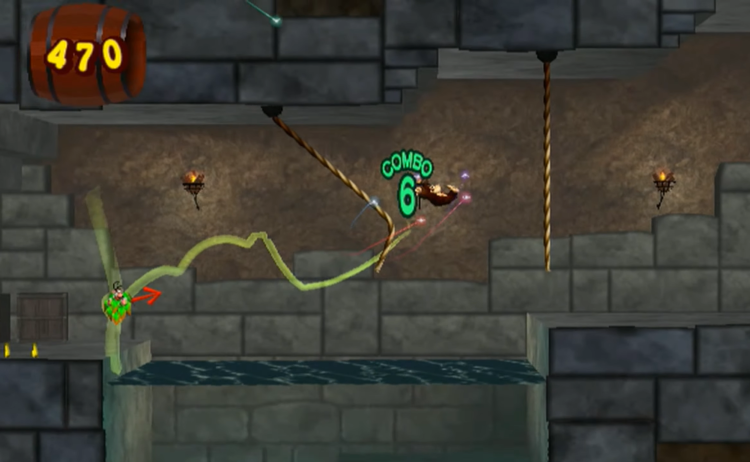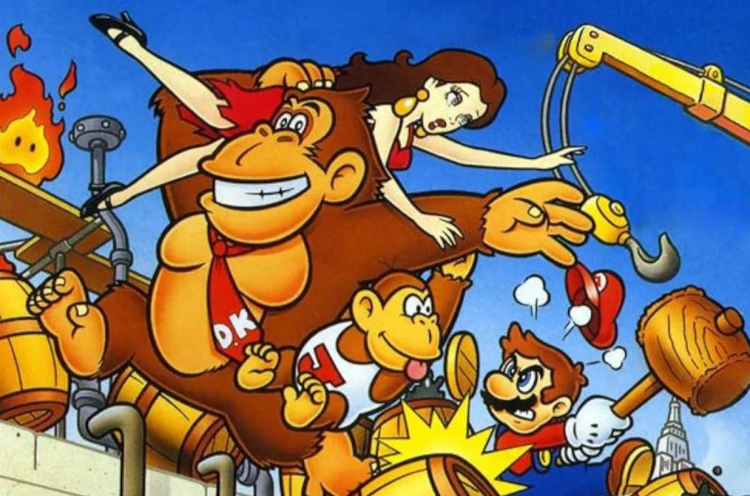Nintendo’s Own Donkey Kong Game Was a Puzzle Platform Masterpiece
Donkey Kong Bananza launches this week, and there’s good reason to be hopeful. It’s the first time in over 20 years that a mainline Donkey Kong game is being made in-house by Nintendo’s Japan studios — the same team behind Super Mario Odyssey. If you want a reason to believe in Bananza, you don’t have to look forward. You can look back.
In Donkey Kong ’94, Nintendo already showed what can happen when it takes Donkey Kong seriously. This Game Boy game from 1994 might be one of the most clever and underrated platformers the company ever made. It had the style of the arcade classic, the brain of a puzzle game, and a surprisingly athletic Mario long before 3D movement became standard. That game is now available through Nintendo Switch Online’s retro library, and it holds up shockingly well.
It starts like you’d expect: Mario climbs some ladders and dodges barrels to reach Donkey Kong. Then you beat the level, and instead of credits, the game opens up. The “arcade remake” turns into something completely different, a sprawling puzzle-platformer with over 100 new levels. Each stage gives you a key to carry to a door, but nothing about the journey is simple. Drop the key for too long, and it resets. Enemies can be thrown or used as stepping stones. Some are platforms in disguise. Some platforms are enemies in disguise. Ladders and bridges appear when you hit switches. It gets weird fast.
Donkey Kong ’94 forces you to think about timing, positioning, and movement in a way most Mario games don’t. It’s not about sprinting or stomping Goombas. There’s no dash button. Instead, you plan your route, handle items carefully, and solve each level like a miniature puzzle box. This was a different kind of platformer — more focused, more methodical, and constantly shifting its rules. And even though it looks like a black-and-white Game Boy title with stiff animations, the design is packed with fresh ideas.

Mario was surprisingly nimble too. Donkey Kong ’94 gave him new moves before Mario 64 did. The standing backflip and side somersault would go on to define 3D Mario’s mobility, but they debuted here. Mario could also swing from bars, launch himself like a gymnast, and perform tricks that never made it into later games. It was a playground for experimental mechanics, most of which worked better than they had any right to.
The game didn’t have flashy graphics or big-budget cutscenes. It didn’t need them. Every stage introduced something new: a switch to hit, a time limit to race, a moving hazard to dodge, or an enemy to exploit. It felt like a game designed by someone testing what platformers could be without turning into another side-scrolling clone. And that someone was Shigeru Miyamoto.
This was a rare Donkey Kong game made by Nintendo’s in-house team — the same exact thing that makes Bananza such an exciting prospect. Since Donkey Kong Country in 1994, the franchise has mostly lived in the hands of other developers. Rare handled it through the ‘90s. Retro Studios rebooted it with Tropical Freeze and Returns. Even Jungle Beat on GameCube, the last DK game Nintendo made itself, came out over 20 years ago and was played with bongos. That game, by the way, was also amazing.
The developers of Jungle Beat went on to create Super Mario Galaxy. Now, that same studio is working on Donkey Kong Bananza.
Nintendo hasn’t ignored Donkey Kong, but it hasn’t really owned the character’s direction in decades. That’s finally changing. The Donkey Kong in Bananza looks like a modern version of the ape from DK ’94 — goofy, expressive, cartoonish in all the right ways. It feels intentional. Nintendo is picking up where it left off.
In Bananza’s reveal trailer, fans spotted some familiar design choices. Objects placed with intention. Puzzle-like platforming. Environmental gimmicks that feel straight out of DK ’94’s bag of tricks. The bouncy cartoon tone is back too, complete with physics-defying barrels and over-the-top expressions. It’s not trying to be gritty or cinematic. It’s doing what Donkey Kong games do best when Nintendo is at the wheel: bold, strange, playful design.

Donkey Kong ’94 also proved that Mario-style polish doesn’t have to mean Mario-style gameplay. It was its own thing. The later Mario vs. Donkey Kong games tried to keep that same formula going, but none of them matched the original’s creativity. Those sequels felt flatter, more mechanical. DK ’94 was alive — it reinvented itself every few levels and never settled into repetition. Even with its dated hardware, the gameplay still holds up. It’s more inventive than most current puzzle-platformers, and it’s still a better Donkey Kong game than anything made since Jungle Beat.
It’s no coincidence that Nintendo is drawing from that energy again. With Donkey Kong Bananza File Size Revealed Ahead of Launch, the spotlight is back on what makes Donkey Kong special — and what’s possible when Nintendo treats the character with the same care as Mario or Zelda. Bananza’s relatively lean install size also hints at tight design, not a bloated sandbox, which matches the Game Boy title’s focus on level-by-level experimentation.
Donkey Kong ’94 didn’t sell tens of millions. It didn’t become a pillar of speedrunning or get remade in HD. But in Nintendo’s own history, it stands out as a moment when the company took a second-tier franchise and poured the same level of talent and invention into it as any of their flagship titles. That’s what’s happening again with Bananza.
This is more than a nostalgia moment. Donkey Kong Bananza isn’t trying to reboot the series with a new tone or new lore. It’s a return to form — back to the kind of clever, layered gameplay that started on a black-and-white Game Boy screen in 1994. And if the Odyssey team delivers anything close to what they did with Mario, Donkey Kong might finally reclaim his spot in Nintendo’s A-list. Not because of branding. Not because of spin-offs. But because, once again, Nintendo is making a Donkey Kong game itself.

Comments